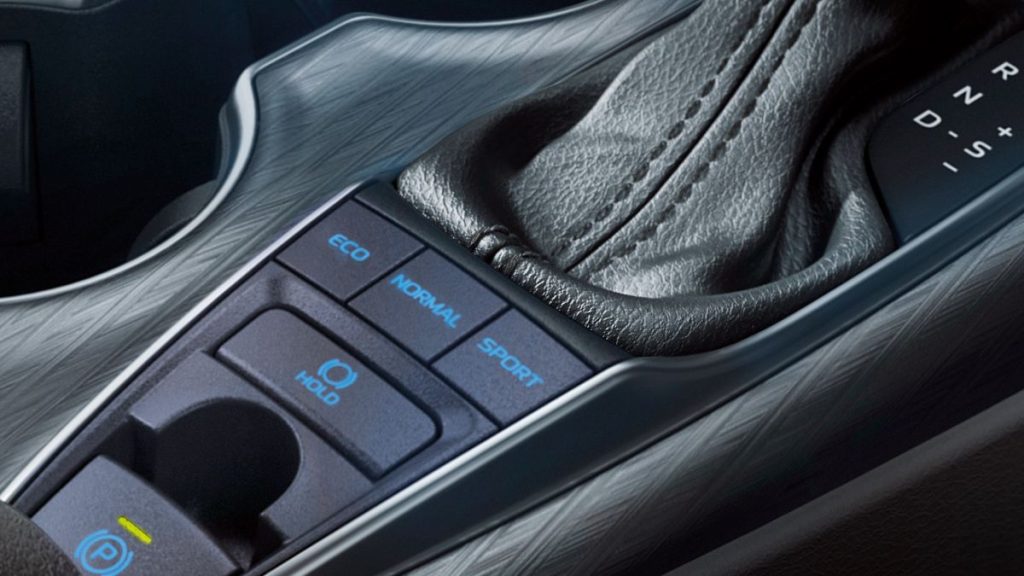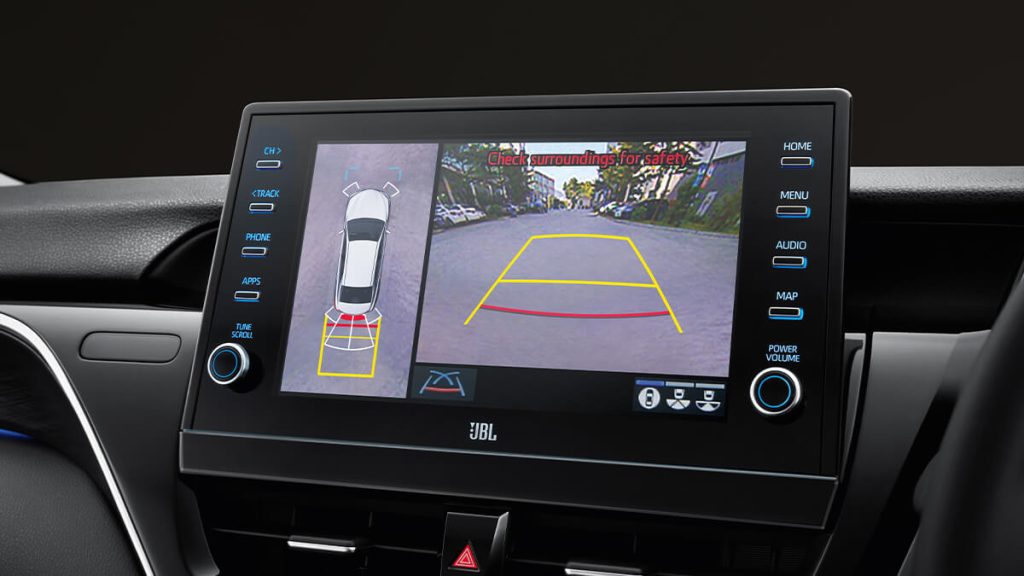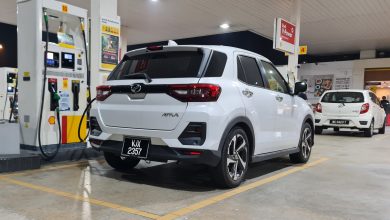Spec Vs Spec: Toyota Camry 2.5V Vs Tesla Model Y SR RWD

The uncle conundrum: a tried-and-true but expensive Toyota, or the futuristic gamble with an EV?
Picture the scene, you are on the verge of retiring after years of running a small but successful business. And as a treat to yourself, you’re now thinking of trading in your trusty old Camry for something a little bit newer to see you off in your golden years.
Now being a loyal Toyota man who likes the idea that all the cars you bought from them since you were young never went wrong even once, you are quite taken by the latest facelifted XV70 Camry that your once-salesman-turned-friend has been talking about to replace your now nearly decade-old version. Despite your wife wanting something higher riding too, you’re quite happy going to golf every weekend in something a little low slung and dare you say it, sexy.

But what is stopping you however from buying the Toyota now is that all your other golfing buddies has been harping on and on about these new-fangled Teslas. Very good value now without the tax they say, and since you live in landed lot you can charge at home for very cheap too, they added.
What more is that having got the chance to check out a Model Y in person during a recent jalan-jalan session at a KL shopping mall, it is more than big enough for all your golf and imminent grand-parenting requirements. You have also decided that being the sensible driver that you are, the single-motor rear wheel drive variant — that incidentally after a few paint and driver assist options retails for about the same price as the Camry — will be the one that you are most likely going for if purchasing said Tesla.
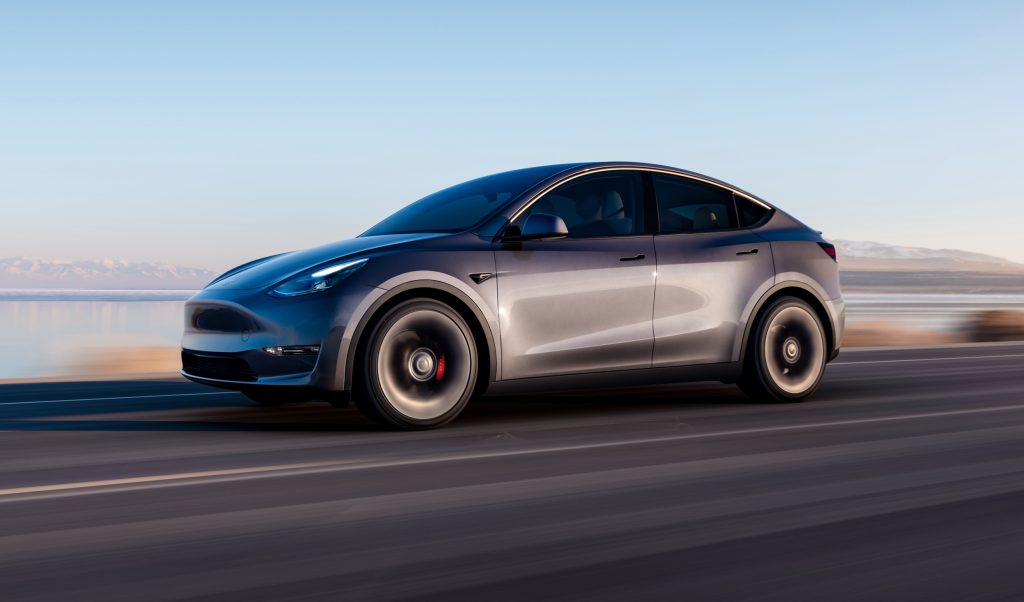
You are however not too keen on the range anxiety and charging complications that everyone seems to talk about with EV ownership, and you are also unsure on whether all the technology in the Tesla would be too much to handle for your admittedly old-fashioned mentality. You are further not entirely convinced on the blobby looks of the Tesla too, with your Toyota salesman-turned-friend warning you about the potential high depreciation of these EVs in a few years as well.
So with all these uncertainties in mind, you decided to ring up the nephew who ‘works with cars one’ for some advice. And in what is most definitely a coincidence and not an article stemming from a very, very lengthy phone call one late evening, here therefore is a short revival of the Spec Vs Spec mini-series to compare what is perhaps two very different cars, that is nevertheless actually seriously considered comparable by at least one person in Malaysia.
Exterior Specs
Now like any other Spec Vs Spec, first comes the exterior comparison. And at least when it comes to comparing the outside dimensions of these two cars in question, it is exactly as what would be expected when pitting a low-slung D-segment sedan against a high-riding mid-sized crossover.
The Camry for instance comes in at 4,885 mm in length, 1,840 mm in width, 1,445 mm in height and has a wheelbase of 2,825 mm. The Model Y on the other hand is expectedly slightly shorter than the Toyota at 4,751 mm (-134 mm), while simultaneously being slightly wider at 1,921 mm (+81 mm) and a lot taller at 1,624 mm (+179 mm), with a slightly longer wheelbase too at 2,890 mm (+65 mm).
Similarly, it should come as a surprise to no one for the Tesla (and its heavy battery packs) to be the heavier car out of the two. The Model Y weighs in at a hefty 1,909 kg, while Toyota only quotes for the Camry to weigh a rather light 1,545 kg.


Moving onto the exterior kit available on both cars now, the Camry lights the way forward with Bi-LED projector headlights (with follow-me-home function) and LED fog lights flanking an oversized grille up front. A set of 18-inch dual-tone multi-spoke alloy wheels then accent the chromed door handles and window surrounds down its side, before LED tail lights and dual chromed exhaust tips finish proceedings round its rump.


As for the Tesla meanwhile, the Model Y is similar to the Camry by featuring LED lights all around its exterior and a subtle boot spoiler too. The American e-crossover however prefers black exterior accents over Toyota’s blinged-out approach to complement its more subtle styling approach, with the optional 20-inch Induction alloys (over the standard 19-inch Gemini items) arriving in a dark grey hue to complement blacked out door handles and window surrounds.

Interestingly enough though, both the Toyota and Tesla are available in at least one vibrant hue. The Camry’s monotone black, white, silver and grey palette is broken up by a Red Mica, while the Model Y’s white, black and grey options augmented by a Red Multi-Coat as well as a Deep Blue Metallic colour.

Interior Specs
Due to Tesla not offering the Model Y with a 7-seat option over here in Malaysia, both cars compared here can legally seat the same number of occupants at any one time. Though given the size advantage, the larger American crossover unsurprisingly wins hands down when it comes to other aspects of interior practicality.
Tesla is currently quoting for the Model Y to have an almost gargantuan 854 litre boot capacity with the second row seats in place (up to the roof), which can further be expanded to a whopping 2,041 litres when the 40:20:40 split rear seats are folded down. This e-crossover further has a decent under-floor storage cubby beneath the aforementioned rear boot, in addition to an addition 117 litre frunk under its bonnet as well.



The Camry on the other hand can only swallow a comparatively measly 493 litres in its boot, with its ski hatch being the only way to load longer items in it too. Though there is a rather cushy reason for why the rear seats can’t be folded down in the Toyota, as said seats are in fact power-reclining units (of up to 8º) to befit its status as a large luxury-focused sedan.

What more also is between the rear seats of the Camry is control panel integrated into the armrest, which not just enables its occupants to recline the seats, but also operate the powered rear sunshade, set the temperature at the rear on the Toyota’s tri-zone climate control with rear air vents, and control what is currently playing through the 9-speaker JBL sound system as well. Other luxury-focused kit within the leather-lined cabin of the Camry meanwhile include a 10-way power adjustable driver seat and an 8-way electric adjustment with ‘chauffeur controls’ for the passenger, interior ambient lighting and manual rear side-window shades.


Now perhaps in direct contrast to the Camry’s multiple sunshades, the Model Y instead nets a full length panoramic glass roof to let in (the often blazing Malaysian) sunlight and brighten up its standard black vegan leather cabin (white upholstery is optional). The Tesla also incidentally bests the Camry when it comes to charging tech by offering twice the number of Qi wireless charging pads (2) in addition to a 13-speaker premium audio system with a subwoofer and two amplifiers.
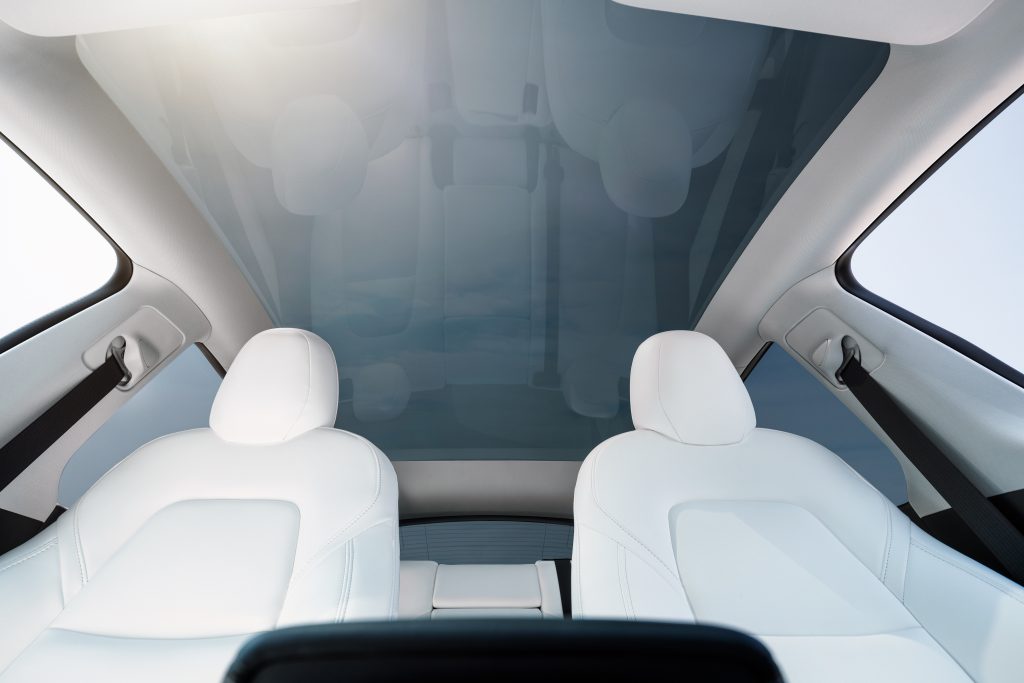
Power-adjustable front seats are standard on the Model Y too, as are EV-specific features such as one pedal driving. Though the headline feature within its relatively minimalist cabin has to be its single 15-inch central infotainment touchscreen which everything is controlled from, and of course comes with built-in games and gimmicks like Caraoke, enables video viewing from Netflix, Youtube and Disney+ while stationary and can perform diagnostics and software updates over-the-air too.

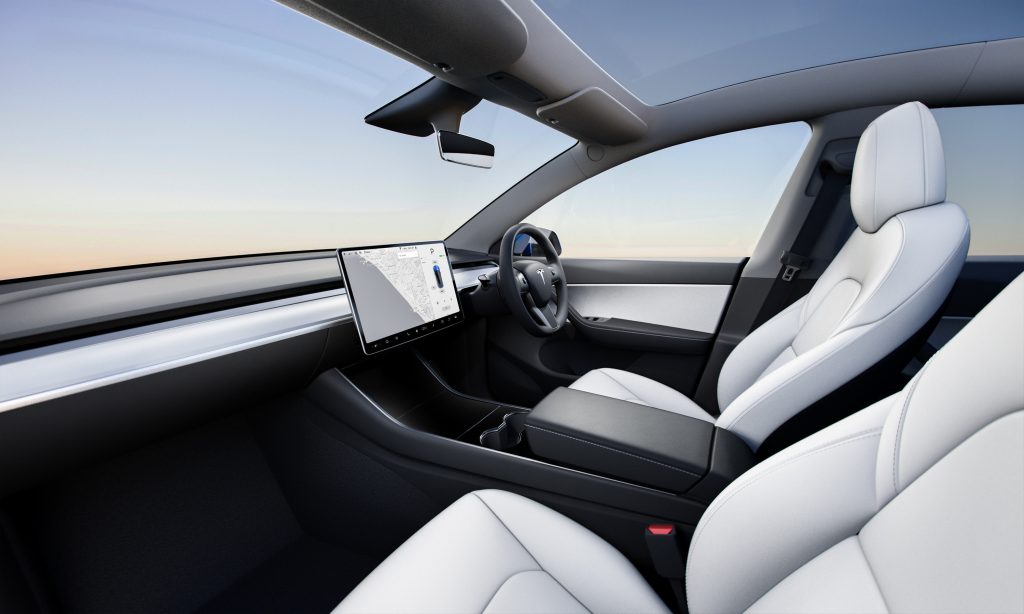
That said, while the Camry’s standard 9-inch central infotainment screen is undoubtably puny relative to the Model Y’s, it does nevertheless come with standard Android Auto and Apple CarPlay integration (which Tesla does not offer). And while on the topic of screens, it is worth noting that the Toyota further nets a 7-inch digital screen inset within its analogue instrument cluster, as well as a 10-inch colour heads up display.

Performance Specs
Now moving neatly onto the performance comparison of these two cars and purely from a numbers perspective at least, the Tesla does expectedly rather easily trounce the Toyota in this particular department. Even in its standard range rear wheel drive form compared here, the Model Y’s single rear mounted motor still has a healthy dose more power at 220 kW (295 hp) and 420 Nm of torque, compared to the Camry’s 209 hp and 253 Nm figure sent by its 2.5-litre Dynamic Force 16-valve naturally-aspirated four-cylinder to its front wheels.

Given that the Camry likely has to row through a number of gears in its 8-ratio automatic transmission before hitting the 100 km/h mark too, it should therefore not come as a surprise for the all-electric Model Y — which has maximum torque from 0 rpm instead of at 5,500 rpm — is quicker off the line than the Toyota. Though there is interestingly just 2.6 seconds between them, with the e-crossover cracking the century sprint in 6.9 seconds relative to the petrol sedan’s (actually still rather reasonable) 9.5 seconds.
To make the Camry seem sportier than it has any right to be as well, Toyota has further included paddle shifters on the 8-speed automatic transmission for its drivers to play with if and when the red mist does descend. Both cars compared here also come with three selectable drive modes for normal, sporty and relaxed driving (dubbed Eco in the Toyota, Chill in the Tesla).
And while on the topic of eco, Tesla claims for the standard range rear wheel drive Model Y compared here to have a WLTP-claimed range of 455 km on a single charge. A figure which is considered rather substantial in the EV-sphere, until a comparison is made with the petrol-powered Camry that is, which should manage a calculated 882 km from its 60-litre fuel tank given its quoted 6.8 L/100 km (14.7 km/L) fuel consumption.
Safety Specs
Moving on now onto the discussion on safety, the Model Y brings to the table Tesla’s famed Autopilot system. Though while the name does surely invoke the notion of self-driving, the unfortunate fact is for this e-crossover to only pack traffic-aware adaptive cruise control and lane centring in its standard base form.
An upgrade meanwhile to the Enhanced Autopilot does add Navigate on Autopilot and Auto Lane Change, but do note for the fancy Autopark and Smart Summon is still listed as upcoming on the Tesla Malaysia website. Likewise a further (costly) upgrade to its Full Self Driving currently brings with it the probable potential of traffic light and stop sign control and auto steer on city streets, but there is actually no official word from the manufacturer on when (if ever) it will be available over here.

To that end therefore, the currently available active driver aids available with the Tesla is actually nearly matched by the supposedly grandpa-spec Camry. Sure it may not have the Model Y’s Auto Lane Change feature that comes with the Enhanced Autopilot add-on, but the included Toyota Safety Sense 2.5+ (TSS) still packs Dynamic Radar Cruise Control (DRCC) that works at all speeds, a pre-collision system (PCS), Lane Departure Alert (LDA) and Lane Tracing Assist (LTA). In fact, it is probably surprising to learn for the Camry to pack one additional airbag (driver’s knee) over the Tesla’s standard six, with Toyota properly knowing the local market by also throwing in its Premium Safety and Solar window film too.

Both vehicles nevertheless net Automatic High Beam (AHB), a 360º surround view camera, Blind Spot Monitor (BSM) with Rear Cross Traffic Auto Brake (RCTAB), a Tyre Pressure Monitoring System (TPMS), a front dash cam in addition to the usual lot of passive safety acronyms. The Tesla and Toyota also have their own security setup for when they are parked up, with the Camry coming with a Vehicle Telematics System (VTS) real-time location tracking through a mobile app and Model Y featuring Sentry Mode.

Price Specs
Onto perhaps the most interesting point of comparison between the both cars here, the Model Y (especially in its standard range rear wheel drive form) is admittedly a bargain at its headline RM 199,000 figure. Conversely, paying RM 219,800 for a Camry that comes from Thailand might seem positively ludicrous.

It is however worth pointing out that while the Model Y does indeed start at RM 199,000, it would cost RM 10,000 to tack on the larger 20-inch alloys and another RM 5,000 for white seats. Any exterior hue other than white too is a RM 5,000 extra, except red which adds RM 10,000 to the base price instead.

Moreover, Enhanced Autopilot (with its Auto Lane Change feature) bumps the price up by RM 16,000, while the Full Self Driving is an almost laughable RM 32,000 for features which Tesla only vaguely promise will be added sometime in the future. The Camry meanwhile only has the option of a welcome light projector for RM 990, with interestingly another RM 800 fee for white or black exterior colour options.

All said therefore, a white Tesla Model Y on larger 20-inch wheels with Enhanced Autopilot optioned costs within a couple of hundred ringgit shy of the RM 219,800 the Camry is currently commanding. Though as any EV owner will now likely loudly proclaim, their electric car will be much cheaper to run in the long run, relative to any petrol-powered car.
And to be fair, they do technically have a point. Road tax for EVs after all are currently free till the end of 2025, while the Camry would cost RM 517.50 per annum to be legally allowed to drive on Malaysian roads.

Tesla also famously requires no periodic maintenance, with only its tyres, cabin filter and wipers needing periodic replacement like any other car. The Camry meanwhile will need to be taken in for regular servicing, with Toyota currently charging RM 2,700 and RM 4,180 respectively for a three- and five-year pre-paid maintenance plan.
Home charging an EV has been loudly promoted to be where the money savings start to accrue, with Tesla themselves advertising for the Model Y to save RM 8,500 on fuel costs alone over a 5-year period. Though if that number may seem a tad small, it is simply because Malaysia is still in a rather unique situation where its subsidised petrol is (still) cheap while the cost of charging an electric car outside is surprisingly expensive.

Speaking of surprisingly expensive too, there might come a time down the road for these EVs to have lost quite a bit of their value due to depreciation. Of course, due to the novel nature of these cars over here, the keyword ‘might’ in the prior sentence is doing a lot of the heavy lifting.
Now without wanting to go into a full on debate here regarding the possibilities of these EVs losing a shed load of money come sale time a few years down the line, just note for the current resale values of hybrids locally and prices of used EVs worldwide are not to be as strong as their supposedly costlier-to-run ICE counterparts. What more too is that pitting the Model Y against the Camry in the depreciation game is just an unfair fight for the former, as everyone knows that the Toyota is in fact the automotive definition of value retention.
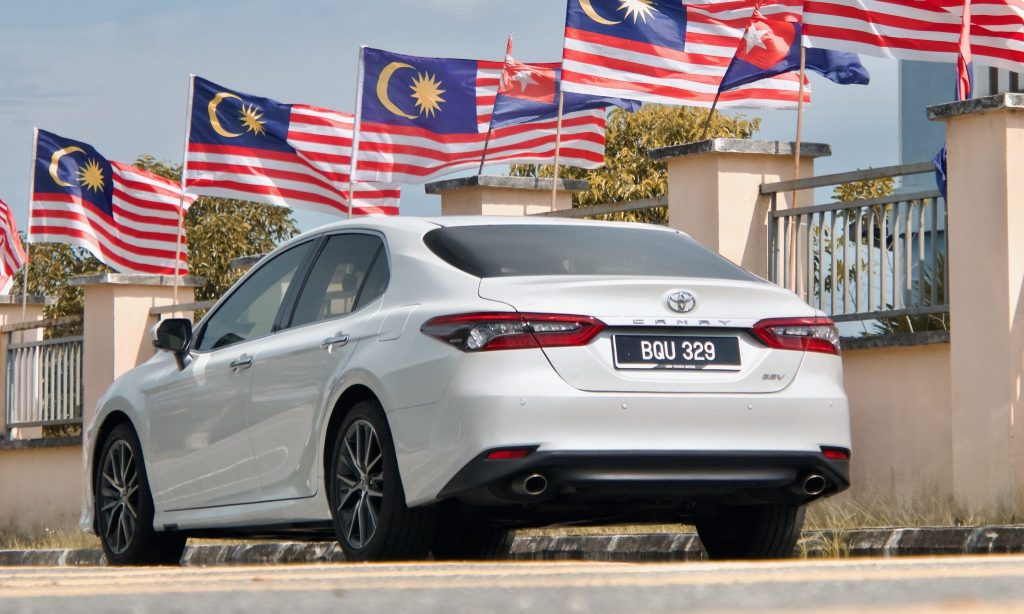
Final Thoughts
Despite the future uncertainties however, the Model Y is still no doubt one of the best-value cars on the Malaysian market right now. Just going by the specs alone, it is a solid recommendation for anyone looking to dip their toes into the EV scene, or what most EV drivers would call it — seeing the light.
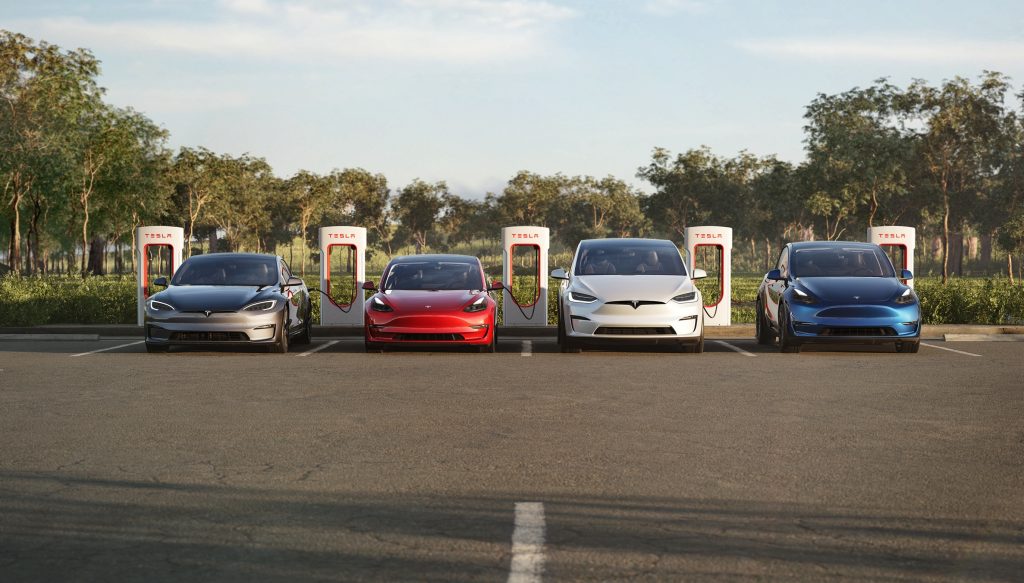
Though for those who have not yet been sucked into the cult of Elon, it is worth pointing out that there still exists future question marks regarding the depreciation and road tax of EVs in Malaysia, in addition to current question marks about the still marginal-at-best charging infrastructure nationwide.
As much as Tesla-stans will likely vocally disagree too, going by the spec comparison at least, it does show for the Camry too still manage in holding its own rather well against the Model Y, and not be the one-sided bloodbath that those who worship at Mr. Musk’s feet might want everyone to believe.
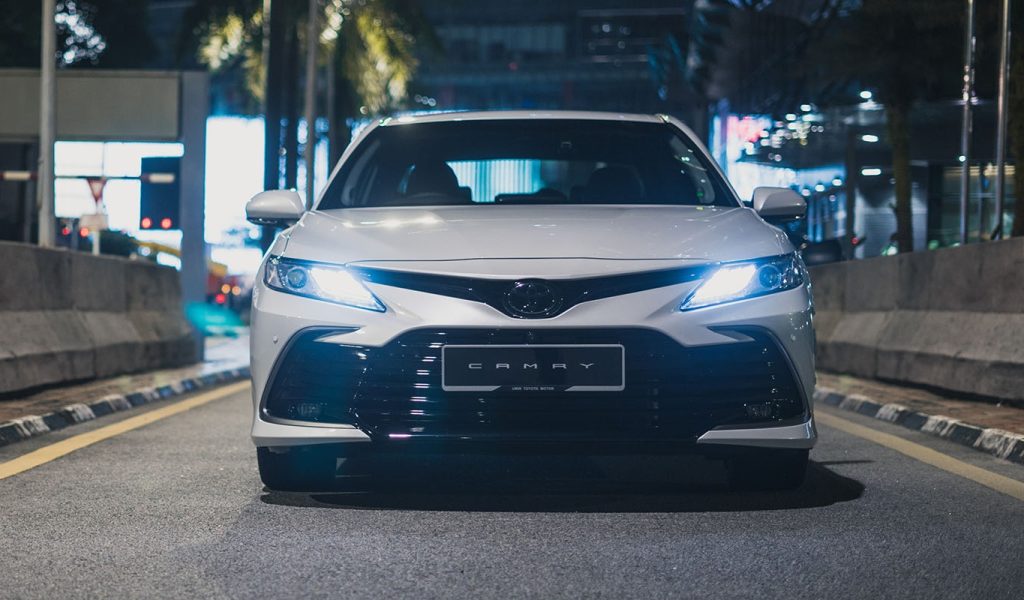
Sure, the Camry is not to be as fast or as spacious as the Model Y, but that is to be expected pitting an old man sedan against an all-electric crossover. What is not perhaps wholly expected though is for the grandpa Toyota to feature a similarly comparable level of everyday (not gimmicks) tech and safety equipment as the nerdy Tesla.
And while conveniently on the topic of old men, just concluding here the original and totally hypothetical scenario that brought about this Spec vs Spec comparison, the Camry was eventually recommended over Model Y for that particular case. All for the simple reason that while you can’t teach an old dog new tricks, you can however safely recommend him into a Camry with the knowledge that it will offer years of comfortable and trouble-free motoring, which is exactly what most people want from their cars in the first place anyway.

Now just before the EV owners come with a barrage of complaints to this conclusion too, you don’t need to tell me that an electric car — with its famed one moving part and no maintenance schedule — is perhaps the definition of trouble-free motoring. What you could perhaps do instead though is take my place in this hypothetical scenario if I recommended the Tesla, and the phone inevitably rings because one of the public charging points does not work or just because he is bored waiting in the car while it tops up at the charging station on his road trips to Penang. Cheers!




